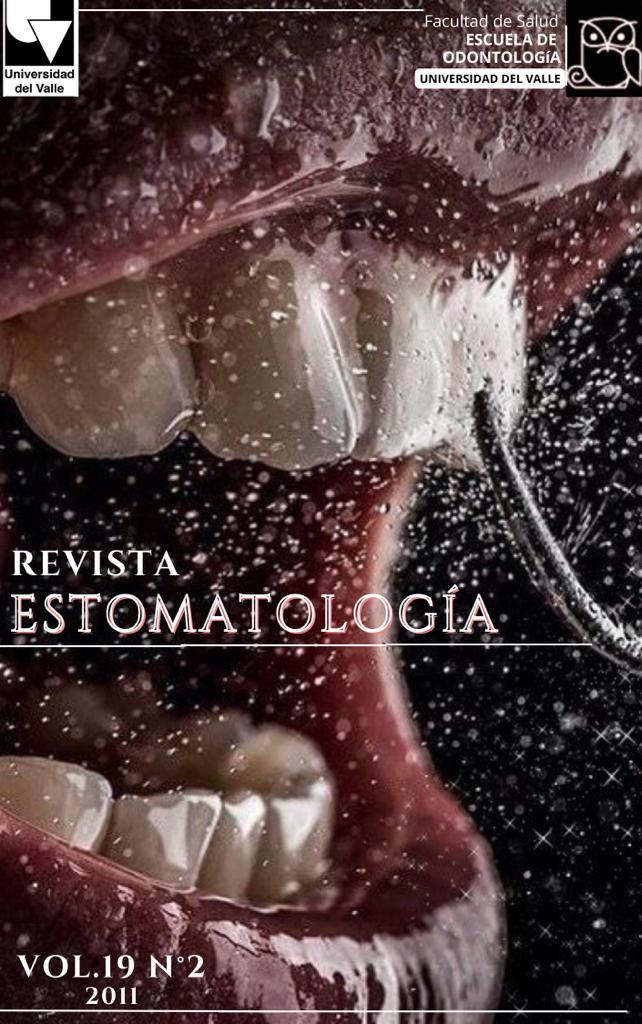Trigeminal nerve: essential aspects from the biomedical sciences
Main Article Content
he trigeminal nerve or V cranial pair of 12 cranial pairs identified since 1798, is the nerve of the first pharyngeal arch and provides general somaticc sensitivity of many structures of the head, except to the scalp below vertex. It is the most voluminous nerve of all cranial pairs of the encephalic peripheral nervous system. It has its apparent origin in the anterior and lateral region near the middle cerebellar peduncle and its true origins distributed in pseudounipolar neurons of trigeminal ganglion “Gasser” located in the middle cranial fossa and sensory and motor nuclei located at different levels of brain stem. Of the three peripheral divisions of the trigeminal nerve, maxillary and mandibular divisions provide the sensory innervation of the structures that constitute the oral cavity, and mandibular division also supplies
motor innervation of the masticatory muscles, making it an essential anatomical reference for dentistry.
Key words: Trigeminal nerve, ophthalmic nerve, maxillary nerve, mandibular nerve, gasserian ganglion, dermatome.
2006.
2. Grueso A, Orozco N, Cruz N. Nervio Trigémino. Universidad del Cauca, Facultad Ciencias de la Salud; 2007.
3. Wilson P, Akesson S, Spacey S. Nervios Craneales en la salud y la enfermedad. Segunda edición. Editorial Médica Panamericana: Argentina; 2009.
4. Carpenter M. Fundamentos de Neuroanatomía. Cuarta edición. Editorial Médica Panamericana: Buenos Aires; 1999.
5. Sadler T. Langman´s Medical Embriology. Décimoprimera edición. Lippincott Williams & Wilkins: Barcelona; 2009.
6. Kandel E, Schwartz J, Jessell T. Principios de Neurociencia. Primera edición. Editorial Mc Graw Hill: Madrid; 2004.
7. Drake R, Vogl W, Adam W. Gray, anatomía para estudiantes. Elsevier: Madrid; 2006.
8. Rouviere H, Delmas A. Anatomía humana, descriptiva, topográfica y funcional. Décimoprimera edición tomo
2. Elsevier: París; 2006.
9. Bustamante J. Neuroanatomía funcional y clínica. Cuarta edición. Celsus: Santafé de Bogotá; 2007.
10. Snell R. Neuroanatomía clínica. Sexta edición. Editorial Médica Panamericana: Buenos Aires; 2007.
11. Moore K. Anatomía con orientación clínica. Sexta edición. Editorial Médica Panamericana: Madrid; 2010.
12. Netter F. Atlas de Anatomía Humana. Quinta edición. Elsevier: U.S.A.; 2011.
13. Abrahams P, Marks S, Hutchings R. Gran Atlas McMinn de Anatomía Humana. Quinta edición. Mosby: España; 2005.
14. Barral JP, Croibier A. Manipulaciones de los nervios craneales. Primera edición. Elsevier: Barcelona; 2009.
15. Nieuwenhuys V, Huijzen V. El Sistema Nervioso Central Humano. Cuarta edición tomo 2. Editorial Médica
Panamericana: España; 2009.
16. Canby C. Anatomía Basada en la Resolución de Problemas. Primera edición. Elsevier: España; 2007.
17. Misch C . Implantología contemporánea. Tercera edición. Elsevier: España; 2009.
18. Yokochi R, Drecoll L. Atlas de Anatomía Humana. Sexta edición. Elsevier: España; 2007.
19. Gaudy F, Arreto C. Manual de anestesia en odontoestomatología. Segunda edición. Elsevier: España; 2006.
20. Decuadro G, Castro G, Sorrenti N, Doassans I, Deleon S, Salle F, et al. El nervio auriculotemporal, bases neuroanatómicas del síndrome de Frey. Neurocirugía 2008; 19(3):218- 32.
21. Martínez A. Anestesia Bucal, guía práctica. Santafé de Bogotá: Editorial Médica Panamericana; 2009.
22. Suazo I, Cantín M, Zavando D. Inferior alveolar nerve block anesthesia via the retromolar triangle, an alternative for patients with blood dyscrasias. Med Oral Patol Oral Cir Bucal 2008; 13(1):43-7.
Los autores/as conservan los derechos de autor y ceden a la revista el derecho de la primera publicación, con el trabajo registrado con la licencia de atribución de Creative Commons, que permite a terceros utilizar lo publicado siempre que mencionen la autoría del trabajo y a la primera publicación en esta revista.





